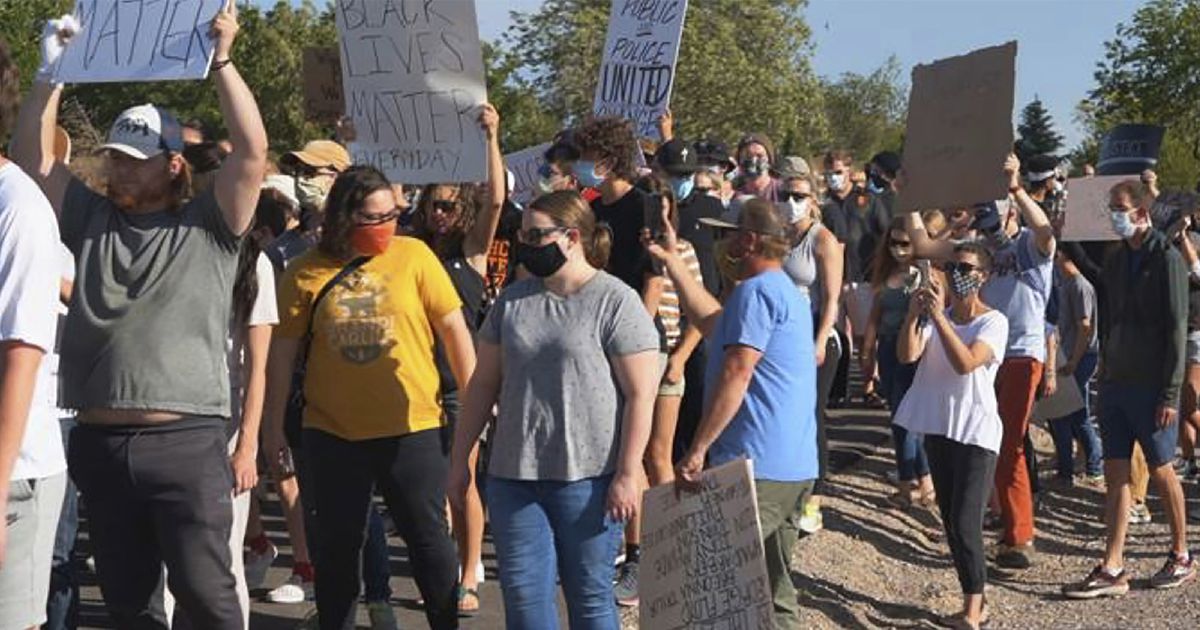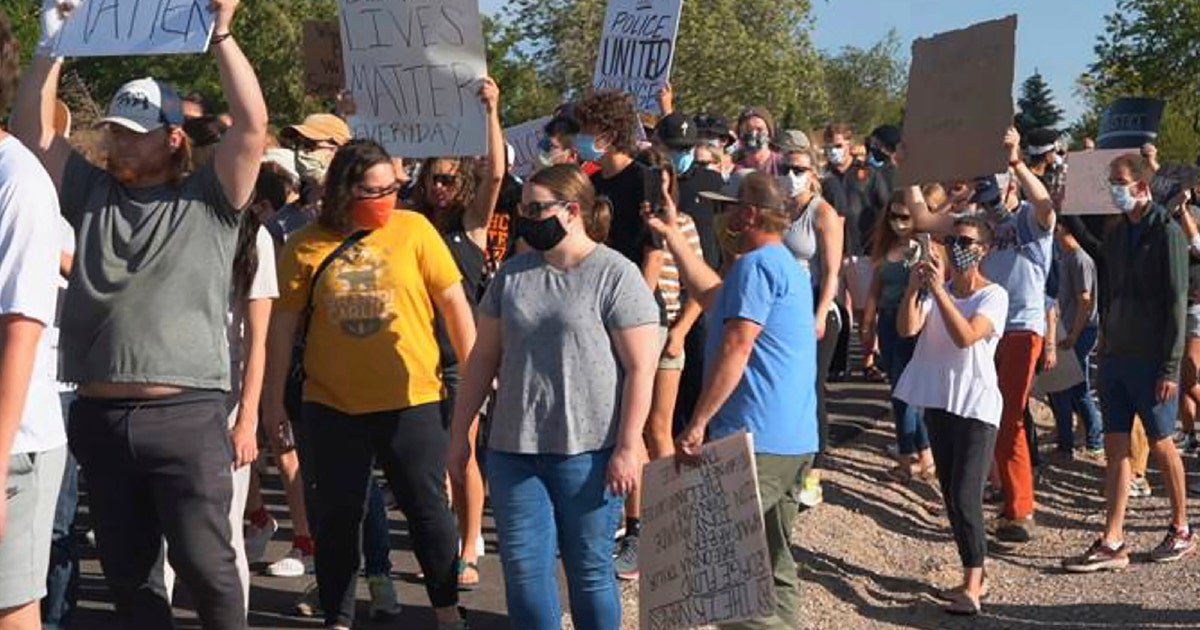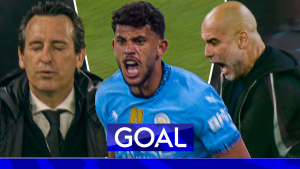Idaho march brings college athletes, officers together


Tommy Togiai could hear the emotion in his teammates’ voices, see it in their eyes, even on a computer screen. The Ohio State defensive tackle felt it, too, in the days after George Floyd’s death while in the custody of Minneapolis police.
The Buckeyes were planning a protest march. At home in Pocatello, Idaho, Togiai could not join them, so he reached out to Garrett Crane, his high school teammate and an Idaho State defensive lineman.
A protest would not send the right message, they decided. Not in Pocatello, where the police and Idaho State’s athletes have a deep-rooted connection.
If they were going to march, law enforcement officers had to be a part of it.
What they didn’t expect was such a rapid, all-in response.
“It all happened so fast,” Togiai said. “Just to see their support and being surprised that they wanted to contact us was really cool. It was a great experience.”
The connection between Idaho State athletics and local authorities goes back to dean of students James Yizar, who brought in the Pocatello Police Department for student orientations.
Current football coach Rob Phenicie continued to foster the relationship and the bond has strengthened through outreach programs, food drives and other interactions.
Police Chief Roger Schei, who sidelines as a professional natural body builder, travels with the football team for road games and often joins morning workouts. Several police officers have also worked out with the team and Idaho State athletes have been invited to join officers at the police shooting range.
The interactions allowed the players to see beyond the badges and uniforms.
Once they decided to march, the officers had to be a part of it. The violent clashes between protesters and police playing out across the country was not what they wanted.
But officers also marched or took a knee with protesters in places like Denver, Santa Cruz, California, Austin, Camden, New Jersey, Ferguson, Missouri.
They would in Pocatello, too.
“It was humbling to know that we’ve built this relationship over several years and it’s paid dividends,” Schei said. “To know that these guys trust us enough to say we need some help to get this done and we want it to be peaceful, we want to show the rest of the nation that we have a good relationship with our local law enforcement.”
Like the rest of the country, Pocatello has also struggled at times. Racial tensions ran high in the 1960s and Pocatello was stung by a series of racial incidents in the early 1980s, including a Black athlete who found “KKK” painted on his car.
When senior defensive lineman Raemo Trevino arrived in Pocatello in 2016, one of the last things his parents saw before heading back to his hometown of Seattle was a truck toting a Confederate flag. His mother, Halina, cried at the sight.
What Trevino has learned in the four years since is that Pocatello, which is in a county that’s 90% white, has made significant strides against racial bias.
Trevino, who is of Black, Mexican and Samoan heritage, said he’s been pulled over for no apparent reason, as have some of his non-white teammates.
Even so, Pocatello has made progress.
Idaho State’s student-athletes, many of whom come from diverse backgrounds, have mostly been embraced by the community. The June 3 unity march was not only peaceful, it drew in people from all over southeastern Idaho.
“There were people I had never seen before,” said Trevino. “To have so many people from diverse backgrounds be a part of this march shows that a rural area of predominantly white people can come together for a common goal.”
With a population under 60,000, Pocatello is a bit too big to be an everyone-knows-your-name town, yet it is small enough to be crisscrossed with connections.
The football team has many direct ties to law enforcement.
The police department’s ranks include former Idaho State football players as well as officers whose children have competed at the school.
Former Bengals linebacker Tony Manu has worked for the Bannock County Sheriff’s Department for 28 years and was appointed undersheriff in March. He has also helped coach at Highland High School, where Togiai and Crane played, and his son, Taison, was an Idaho State defensive back.
“I don’t know that what’s happening here can work anywhere else, but it helps when you have a relationship with the community outside of just being a cop,” said Manu. “It’s fortunate for us that we live where we live and I feel like we have a good support system in the community.”
Once Togiai and Crane first talked, they reached out to friends and fellow athletes in the area, including Trevino and Idaho State basketball player Daxton Carr, who also attended Highland High.
Trevino texted Schei and Crane reached out to Manu through Facebook messenger.
Turns out, the two officers were in the same meeting, planning for another possible march in the area.
Less than 90 minutes later, the four student-athletes were in front of department heads from across the area, laying out their idea.
“It was crazy because you’d think a bunch of 20- to 25-year-old kids in front of a bunch of police officers, we would be listening to them,” said Crane, who is entering his junior year.
The plan blossomed from there.
Word of the unity march spread quickly through social media and coverage from the local media fanned interest. The student-athletes handled the logistics and the women’s basketball team pitched in by making 80 posters to post around town.
Two days after the initial conversation between Togiai and Crane, more than 1,000 people marched.
Student-athletes, law enforcement officers and people from a variety of backgrounds walked shoulder to shoulder.
“Hopefully, this can be a standing point for people to always look back on and see how everyone came together to achieve a common goal,” Togiai said.





